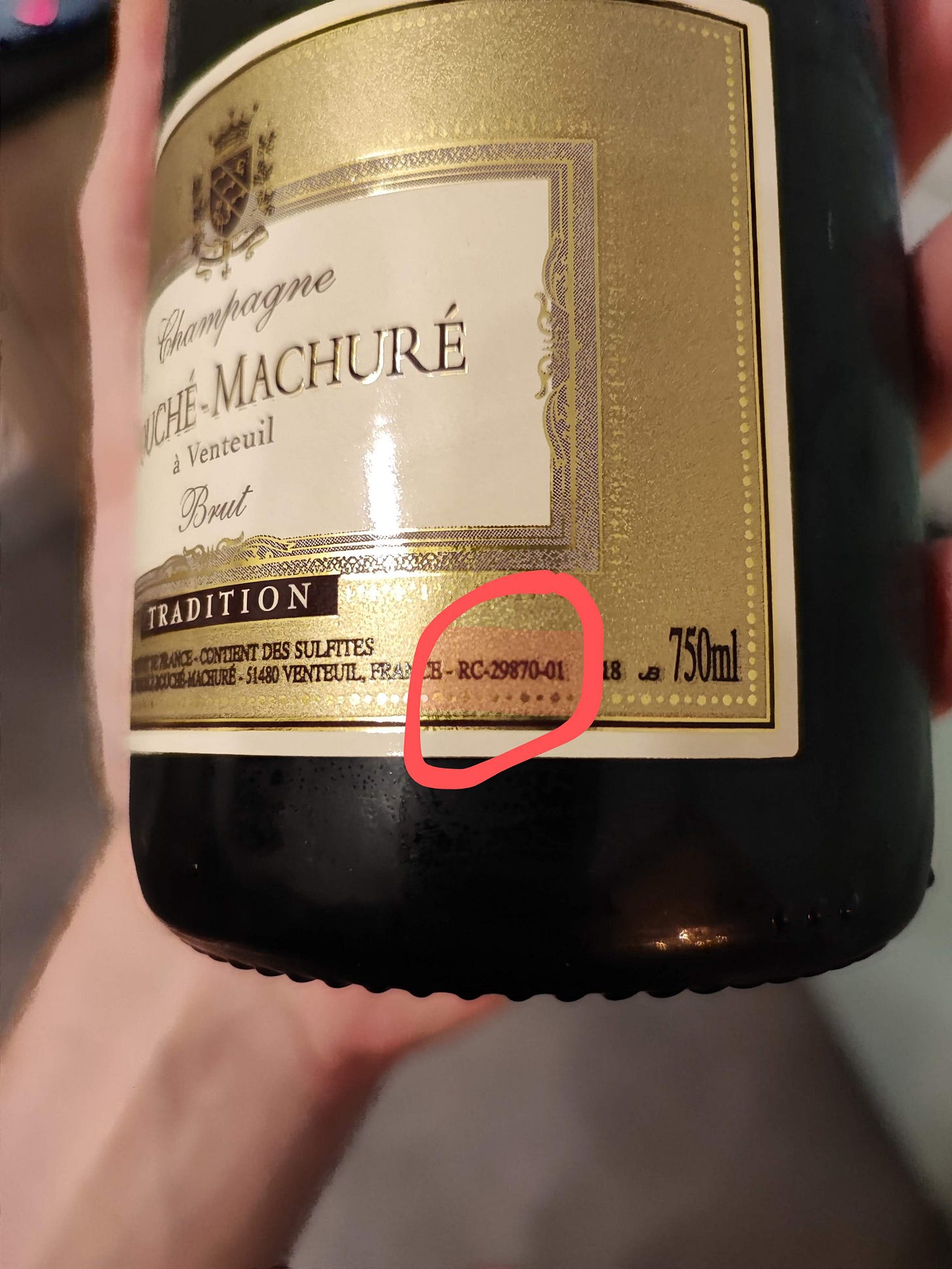Meiningers International just published a piece by British writer Robert Joseph entitled ‘The Grower Champagne Success Story That Never Happened’.
I’m confused.
How is it, then, that every importer I know spends their days scrabbling around for tiny allocations, even from new growers? What caused all those empty stock rooms I have been seeing? Why are the prices for grower wines so high?
The answer is that data Joseph uses, which points to a slowly-diminishing market share for ‘vignerons’ since 2000, contains an enormous flaw: The CIVC count both ‘true’ growers (‘RM’s, Récoltant-Maniupulants who grow and produce their own wines) and ‘RC’s (Récoltant - Cooperatuers whose wines are actually wines made at the co-operative from a blend of the village’s grapes and sold back to them to label as their own) as ‘Vignerons’.
(There’s more here, if you’re interested)
What is 'Grower Champagne'?
Moussé Fils in Cuisles, in the Marne Valley ‘Grower Champagne’. A term that seems, on the surface, to provide a neat way of separating out producers whose wines are made only from their own vineyards. Champagne’s governing body, the C.I.V.C., actually divides producers into ‘houses’, which buy in grapes and base wine, and ‘growers’ when it publishes stat…
It makes a nonsense of the data from a consumer perspective because there are actually more RCs than RMs: writer Caroline Henry sent me some data she requested from the CIVC which shows:
The number of houses has increased to 420 in 2022 from 307 in 2013. Some of this is down to growers being so successful that they have had to switch status to ‘NM’ in order to buy in grapes. However, the effect is likely small compared to:
The number of RCs has reduced by 24% from 2654 in 2012 to 2032 in 2022, whereas the number of RMs has decreased 15% from 1,942 to 1,646
The crucial point is this: what consumers and journalists mean when we talk about ‘grower champagne’ is fundamentally different from what champagne means when collects data about ‘the growers’. RC Champagne is affordable stuff which the French has a long tradition of putting in the boots of their car when they come to visit, or cracking open in the local restaurant - in fact I’m staying in an airbnb in Champagne at the moment that appears to be owned by an RC, and they left a few bottles in the fridge: 18 EU for 75cl, 12 for 375:
Joseph tends not to pass up an opportunity to stick the boot in to critics/writers/wine congnoscenti who he sees as out of touch with the vox populis, and, in this case, a single not-very-useful table is taken up as a blunt club to swing. Fundamentally, using ‘market share’ on this basis as some sort of measure of the success - or otherwise - of the ‘grower champagne’ that we actually talk about doesn’t hold up, though. It’s not a brand of sneakers, and its success is much broader than a purely commercial one.
What we are really seeing is that cheap, commercial champagne - the RCs included - is a sickly beast, Champagne’s first victim of the general reduction in alcohol consumption and the rise of alternative sparkling wines. Yes, as long as the CIVC keeps lumping RCs and RMs together in its statistics, the numbers may well keep showing drops in sales for ‘vignerons’. Anyone, though, that goes shopping for good grower champagne, visits producers and talks to importers and retailers, will know the real story; no, the market is not always going to be red-hot, but if there is anyone quivering in their boots at the moment here, it ain’t the Récoltants…






